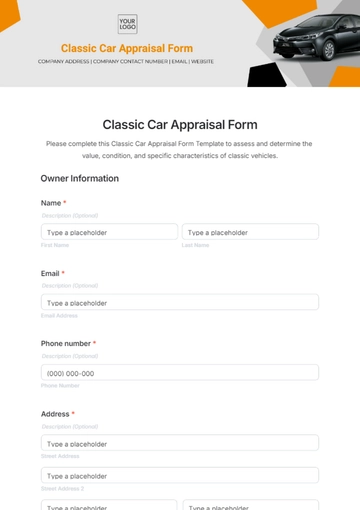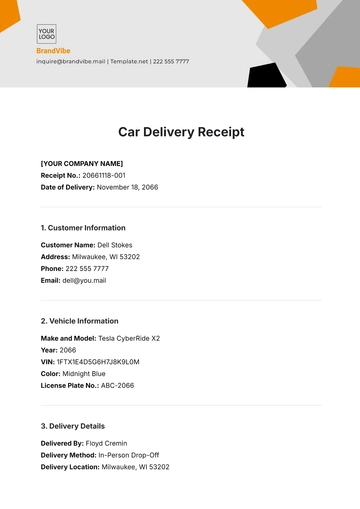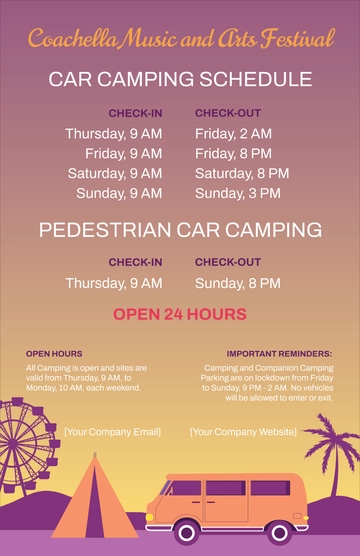Free Car Wash Feasibility Study

1. Executive Summary
[Your Company Name] is planning to establish a state-of-the-art car wash facility in [City, State]. This feasibility study aims to assess the viability of the business by analyzing market demand, financial projections, operational requirements, and potential risks. The goal is to ensure that the proposed car wash can achieve profitability and sustainable growth while meeting customer needs and environmental standards.
1.1 Business Objectives
Achieve monthly revenue of $50,000 within the first year.
Build a loyal customer base of 1,000 recurring clients by the end of the first year.
Implement eco-friendly car wash techniques to reduce water usage by 40%.
1.2 Financial Objectives
Generate annual revenue of $600,000 by the second year.
Maintain a gross profit margin of at least 60%.
Achieve a break-even point within the first six months of operations.
2. Market Analysis
2.1 Industry Overview
The car wash industry in the United States is valued at approximately $15 billion, with an annual growth rate of 3%. This growth is driven by factors such as increasing vehicle ownership, consumer demand for convenience, and environmental concerns. The industry is highly fragmented, with numerous small operators and a few large chains dominating the market.
2.2 Local Market Conditions
In [City, State], the car wash market is competitive, with several established players and new entrants. The local market is characterized by:
High Demand: Increasing vehicle ownership and busy lifestyles drive demand for car wash services.
Environmental Awareness: Growing consumer preference for eco-friendly car wash solutions.
Technological Advancements: Adoption of advanced car wash technologies to improve efficiency and service quality.
2.3 Target Market
[Your Company Name] will target a diverse customer base, including:
Local Residents: Individuals and families within a 10-mile radius seeking regular car maintenance.
Commercial Clients: Businesses with fleets of vehicles requiring frequent washing services.
Eco-Conscious Consumers: Customers who prioritize environmentally friendly practices.
Market Segmentation
Segment | Characteristics | Estimated Market Size |
|---|---|---|
Local Residents | Middle to upper-income households seeking convenience | 12,000 households |
Commercial Clients | Businesses with fleet vehicles requiring frequent washes | 60 businesses |
Eco-Conscious Consumers | Environmentally aware individuals and groups | 2,500 households |
3. Competitor Analysis
3.1 Competitor List
To gain a comprehensive understanding of the competitive landscape, we have identified the top five competitors in [City, State]. These competitors were selected based on their market presence, service offerings, and customer reviews.
[Competitor 1]
[Competitor 1] is a well-established car wash service provider known for its comprehensive range of services. They have built a loyal customer base through consistent service quality and a strong brand presence. Their focus is on providing detailed and full-service car washes, attracting customers looking for thorough vehicle care.
[Competitor 2]
[Competitor 2] stands out for its commitment to eco-friendly car wash practices. They utilize innovative waterless car wash technology and biodegradable products, appealing to environmentally conscious customers. Their strong focus on sustainability has earned them a positive reputation in the community.
[Competitor 3]
[Competitor 3] is a large chain with multiple locations across [City, State]. Known for their affordability and convenience, they offer basic to full-service car washes at competitive prices. Their extensive network and strong marketing efforts make them a prominent player in the local car wash market.
[Competitor 4]
[Competitor 4] is renowned for its premium car wash services. They cater to customers seeking high-quality, detailed car care, including interior cleaning and ceramic coating. Their emphasis on customer satisfaction and premium service quality sets them apart from more budget-focused competitors.
[Competitor 5]
[Competitor 5] is a new entrant focusing on technology-driven car wash solutions. They offer advanced services like touchless and automated car washes, along with convenient mobile car wash options. Despite being new, their innovative approach and competitive pricing are quickly gaining them a foothold in the market.
3.2 Competitive Analysis
This section provides detailed profiles of the identified competitors, highlighting their strengths, weaknesses, services, pricing, and customer feedback.
[Competitor 1]
Strengths | Weaknesses |
|---|---|
Wide range of services | Higher prices compared to some competitors |
Established brand with a loyal customer base | Limited focus on eco-friendly practices |
Strong online presence and positive customer reviews | Longer wait times during peak hours |
[Competitor 2]
Strengths | Weaknesses |
|---|---|
Strong focus on sustainability | Higher price point may deter budget-conscious customers |
Innovative waterless car wash technology | Smaller service area compared to larger chains |
Positive reputation for environmental responsibility | Limited advertising and brand recognition |
[Competitor 3]
Strengths | Weaknesses |
|---|---|
Extensive network of locations | Inconsistent service quality across different locations |
Affordable pricing for basic services | Long wait times during peak hours |
Strong brand recognition and marketing efforts | Limited focus on premium services |
[Competitor 4]
Strengths | Weaknesses |
|---|---|
High-quality, premium services | Higher prices may limit customer base |
Excellent customer service and satisfaction | Limited number of locations |
Strong focus on detailing and premium car care | High operational costs |
[Competitor 5]
Strengths | Weaknesses |
|---|---|
Innovative and advanced technology | New entrant with limited market share |
Convenient mobile car wash services | Higher initial setup costs |
Competitive pricing for technology-driven services | Limited customer reviews and reputation |
4. Operational Plan
4.1 Location and Facilities
[Your Company Name] will be strategically located in a high-traffic area of [City, State], ensuring easy accessibility and visibility. The facility will include:
Drive-Through Car Wash Tunnel: For quick and efficient exterior washes.
Detailing Bays: Dedicated spaces for interior and exterior detailing services.
Customer Waiting Area: Comfortable waiting area with amenities such as free Wi-Fi, refreshments, and viewing windows.
4.2 Equipment and Technology
To ensure operational efficiency and superior service quality, [Your Company Name] will invest in state-of-the-art technology and equipment, including:
Water Recycling Systems: To minimize water usage and reduce environmental impact.
Automated Payment Systems: For convenient and efficient transactions.
Advanced Cleaning Equipment: High-pressure washers, steam cleaners, and eco-friendly cleaning agents.
4.3 Staffing Plan
[Your Company Name] will hire experienced staff and provide comprehensive training programs to ensure high service standards. The team will include:
Manager: Overseeing daily operations and staff management.
Technicians: Skilled in car wash and detailing services.
Customer Service Representatives: Ensuring excellent customer experiences and handling inquiries.
4.4 Operational Workflow
Customer Arrival: Greet customers and confirm service requirements.
Service Execution: Perform selected car wash or detailing services using eco-friendly methods.
Quality Check: Inspect the vehicle to ensure service standards are met.
Customer Feedback: Collect feedback and address any concerns.
5. Marketing and Sales Strategy
5.1 Branding and Positioning
[Your Company Name] will establish a strong brand identity focused on quality, convenience, and sustainability. Our positioning strategy includes:
Brand Messaging: Emphasizing eco-friendly practices, superior service quality, and customer satisfaction.
Visual Identity: Creating a memorable logo, color scheme, and branding materials.
5.2 Marketing Campaigns
To attract and retain customers, [Your Company Name] will implement a comprehensive marketing strategy, including:
Digital Marketing: Utilizing social media, search engine optimization (SEO), and online advertising to reach a broader audience.
Local Partnerships: Collaborating with local businesses and organizations for cross-promotions and community events.
Promotional Offers: Providing discounts, loyalty programs, and membership plans to encourage repeat business.
5.3 Sales Strategy
Our sales strategy focuses on creating value for customers through a variety of service packages and membership programs:
Service Packages: Offering tiered packages that cater to different customer needs and budgets.
Membership Programs: Introducing subscription-based memberships with benefits such as unlimited washes, discounts on detailing services, and priority service.
5.4 Sales Forecast
The sales forecast projects revenue growth over the first three years of operations.
Year | Revenue ($) | Growth Rate (%) |
|---|---|---|
2050 | 300,000 | |
2051 | 600,000 | 100 |
2052 | 720,000 | 20 |
6. Financial Analysis
6.1 Startup Costs
The startup costs for [Your Company Name] include expenses related to facility setup, equipment purchase, marketing, and working capital.
Expense Category | Estimated Cost ($) |
|---|---|
Facility Lease | 50,000 |
Equipment Purchase | 200,000 |
Renovation and Setup | 100,000 |
Initial Inventory | 20,000 |
Marketing and Advertising | 30,000 |
Working Capital | 50,000 |
Total | 450,000 |
6.2 Revenue Projections
Revenue Stream | Monthly Revenue ($) | Annual Revenue ($) |
|---|---|---|
Car Wash Services | 30,000 | 360,000 |
Detailing Services | 10,000 | 120,000 |
Membership Programs | 5,000 | 60,000 |
Additional Services | 5,000 | 60,000 |
Total | 50,000 | 600,000 |
6.3 Cost of Goods Sold (COGS)
Expense Category | Monthly Cost ($) | Annual Cost ($) |
|---|---|---|
Cleaning Supplies | 3,000 | 36,000 |
Water and Utilities | 2,000 | 24,000 |
Labor Costs | 10,000 | 120,000 |
Maintenance | 2,000 | 24,000 |
Total | 17,000 | 204,000 |
6.4 Gross Profit
Gross profit is calculated by subtracting the cost of goods sold from total revenue.
Year | Revenue ($) | COGS ($) | Gross Profit ($) | Gross Profit Margin (%) |
|---|---|---|---|---|
2050 | 300,000 | 120,000 | 180,000 | 60 |
2051 | 600,000 | 204,000 | 396,000 | 66 |
2052 | 720,000 | 244,800 | 475,200 | 66 |
6.5 Operating Expenses
Operating expenses include all costs required to run the business that are not directly tied to the production of goods or services.
Expense Category | Monthly Cost ($) | Annual Cost ($) |
|---|---|---|
Rent | 5,000 | 60,000 |
Salaries and Wages | 8,000 | 96,000 |
Marketing and Advertising | 3,000 | 36,000 |
Insurance | 1,000 | 12,000 |
Office Supplies | 500 | 6,000 |
Miscellaneous | 500 | 6,000 |
Total | 18,000 | 216,000 |
6.6 Operating Profit
Operating profit is calculated by subtracting operating expenses from gross profit.
Year | Gross Profit ($) | Operating Expenses ($) | Operating Profit ($) | Operating Profit Margin (%) |
|---|---|---|---|---|
2050 | 180,000 | 108,000 | 72,000 | 24 |
2051 | 396,000 | 216,000 | 180,000 | 30 |
2052 | 475,200 | 259,200 | 216,000 | 30 |
6.7 Net Profit
Net profit is the final profit after all expenses have been deducted from total revenue.
Year | Operating Profit ($) | Taxes ($) | Net Profit ($) | Net Profit Margin (%) |
|---|---|---|---|---|
2050 | 72,000 | 14,400 | 57,600 | 19.2 |
2051 | 180,000 | 36,000 | 144,000 | 24 |
2052 | 216,000 | 43,200 | 172,800 | 24 |
7. Risk Analysis
7.1 Identified Risks
Identifying potential risks is crucial for ensuring the success and sustainability of [Your Company Name]. Key risks include:
Weather Dependency: Adverse weather conditions can lead to decreased customer turnout and revenue fluctuations.
Economic Fluctuations: Economic downturns can reduce consumer spending on non-essential services like car washes.
Competition: The presence of established competitors and new entrants in the market can pose a significant challenge.
Regulatory Changes: Changes in environmental regulations and industry standards can impact operations and increase costs.
Technological Disruptions: Rapid advancements in technology can render existing equipment and practices obsolete.
7.2 Mitigation Strategies
Weather Dependency: Implement marketing strategies and promotions during off-peak seasons and bad weather periods. Offering indoor detailing services and discounted rates can help maintain customer interest.
Economic Fluctuations: Diversify service offerings to include more affordable options and packages to attract cost-conscious customers during economic downturns. Implement loyalty programs and membership plans to ensure a steady revenue stream.
Competition: Differentiate through superior customer service, eco-friendly practices, and advanced technology. Build strong customer relationships and maintain high service quality to establish a loyal customer base.
Regulatory Changes: Stay updated on regulatory changes and invest in necessary upgrades to comply with new standards. Develop contingency plans to address potential regulatory impacts.
Technological Disruptions: Continuously invest in advanced technology and stay abreast of industry trends. Allocate resources for research and development to remain competitive and innovative.
8. Sustainability and Corporate Social Responsibility
8.1 Eco-Friendly Practices
Sustainability is a cornerstone of [Your Company Name]'s business model. Our commitment to eco-friendly practices includes:
Water Recycling Systems: Implementing water recycling systems to significantly reduce water consumption and environmental impact. These systems will filter and reuse water, conserving resources and reducing costs.
Biodegradable Cleaning Products: Using only biodegradable and non-toxic cleaning agents that are safe for the environment. These products will ensure that no harmful chemicals are released into the water system.
Energy Efficiency: Utilizing energy-efficient equipment and renewable energy sources to minimize the carbon footprint of the car wash facility.
8.2 Community Engagement
[Your Company Name] believes in giving back to the community and fostering strong local relationships. Our community engagement initiatives will include:
Local Partnerships: Collaborating with nearby businesses for cross-promotions and community events.
Charitable Contributions: Regularly donating a portion of profits to local charities and environmental conservation efforts.
Community Events: Hosting car wash fundraisers and participating in community clean-up projects to promote environmental awareness and community spirit.
9. Conclusion
This comprehensive feasibility study demonstrates the viability of establishing a state-of-the-art car wash facility in [City, State]. By leveraging our strengths, addressing potential weaknesses, capitalizing on opportunities, and mitigating risks, [Your Company Name] can strategically position itself for long-term success and sustainability in the competitive car wash industry.
- 100% Customizable, free editor
- Access 1 Million+ Templates, photo’s & graphics
- Download or share as a template
- Click and replace photos, graphics, text, backgrounds
- Resize, crop, AI write & more
- Access advanced editor
Ensure your car wash venture's viability with Template.net's Car Wash Feasibility Study Template. This essential tool, fully editable and customizable with our AI editor tool, helps you analyze all critical aspects—from market demand to financial sustainability—providing a detailed assessment of your business's potential success before you invest time and resources.





























